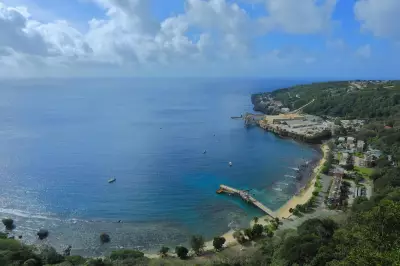
Several Canberra suburbs have been grappling with a noticeable increase in power blackouts in recent months, new data reveals, even as the territory's electricity provider describes overall outage rates as 'relatively stable'.
Suburban Power Grid Under Pressure
Residents in the suburbs of Gungahlin, Molonglo, and Weston Creek were hit with a higher frequency of electricity outages in the second half of 2025. Evoenergy, the ACT's electricity provider, has acknowledged these localised issues, attributing them to 'various reasons'.
This comes at a time when demand for electricity has surged to record levels, particularly during the winter of 2025. The increased load is partly driven by the ACT's ongoing transition away from gas heating towards electrification.
By the Numbers: Outages Up, But Fewer Properties Affected
Evoenergy's own data presents a complex picture. The past financial year, 2024/25, saw 546 unplanned outages across the network. This marks a significant increase from the 486 outages recorded in 2023/24 and 461 in 2022/23.
However, in a contrasting trend, the total number of residential and non-residential properties affected by these blackouts actually fell. In 2024/25, 81,238 properties were impacted, down from 85,059 the previous year.
Sam Sachse, Evoenergy's Acting General Manager, addressed the discrepancy. 'We do acknowledge that there are some pockets within certain areas that have experienced more interruptions recently,' Mr Sachse said. He confirmed the company is focused on managing these hotspots and improving network reliability.
Improvements Amid the Challenges
Despite the rise in outage incidents, there have been some positive developments. The average duration of a blackout decreased, falling from 45.22 minutes in 2023-24 to 41.63 minutes in 2024-25. Furthermore, the average number of outages experienced by each property dropped from 0.59 to 0.51.
Mr Sachse credited upgrades to power infrastructure, including substations and automated technology, for these improvements. 'In the last four years, the number of incidents has stayed relatively stable, and due to improvements in the configuration of the network, the average duration of an outage has reduced by about seven minutes since 2021,' he stated.
The main culprits behind the blackouts include severe weather events that topple trees onto power lines, interference from wildlife, equipment faults, and third-party damage from excavations or vehicle collisions.
Notable recent events include a blackout in the Molonglo Valley and Weston Creek in October 2025 that left thousands of properties, including a school, without power. Earlier, storms in July plunged hundreds into darkness on one of the coldest nights of the year.
Evoenergy has emphasised that its priority during any outage is to restore power as quickly and safely as possible, recognising the significant dissatisfaction and disruption caused to customers.





